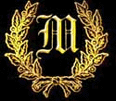
G.I. Joe
The greatest toy line ever created
by Dave McAwesomeAllow me to explain the significance of G.I. Joe without any hyperbole whatsoever: Cooltastic!
See, it wasn't long ago when there was no G.I. Joe. Girls had Barbie; boys had magnifying glasses to melt Barbie's head. That's how it sussed out. In the early 1960s, Larry Reiner was working at Ideal Toy Company. Reiner was no slouch, mind you. Those little plastic pieces that come in board games? He was a key man behind that. He also longed for a doll that could be marketed to boys--a soldier doll with guns and articulated parts. His boss turned him down because, y'know, boys don't play with dolls. They would, however, play with action figures. Reiner took the idea to a licensing agent named Stan Weston who then met with Hasbro (named Hassenfeld Brothers until 1957).
G.I. Joe began as a 12-inch figure. He was in the regular army. Other uniforms and equipment were available separately (sound a lot like Barbie? That's what the G.I. Joe marketing plan was modeled after.). This was 1964. By 1968, hippies ruined the toy soldier market and forced Hasbro to rethink it's awesome gun-toting Joes. G.I. Joe was remade into an 'adventurer.' By 1970 this concept would expand to an entire Adventure Team. Joining Joe (who now had a wooly Grizly Adams beard) and Adventure Team Commander Mike Triumph was the totally-not-awkward-or-racist-in-any-way Black Adventurer.
Joe: Morning, Commander Triumph. Awaiting orders.
Mike Triumph: At ease, Joe. I'd like to introduce you to a new member of the team who will also serve us drinks on the patio. Say hello to Black Adventurer.
Joe: *makes motion to salute*
Mike Triumph: Hoho, there'll be no need to salute a genetic inferior, Joe.
Joe: Sorry, Commander. Har! It's fun being white.
Mike Triumph: Yes it is, Joe. Yes. It. Is.
Flash forward to 1974: Kung Fu grip. The traditional plastic hand was replaced by a flexible rubber one that could hold weapons and tools. Finally, the Joes had evolved to the level of chimpanzee. I guess the Kung Fu grip was a big deal at the time, but gah, that beard! Two years later, OPEC (Organization of the Petroleum Exporting Countries) and the oil crisis of the 70s nearly wiped out the Joe line. Petroleum is an important ingrediant in plastic, you see. G.I. Joe eventually got shrunk down to Mego size the following year (Mego made 8-inch Marvel and DC superhero figures in the 70s. The company (in)famously turned down the license to make Star Wars figures, a decision which precipitated its end).
Okay, 1977. The most important year ever. Star Wars. George Lucas wants X-wing and TIE Fighter toys. You can't do that with 12-inch figures. They'd be too big and expensive. Kenner designs 3 3/4-inch figures. Perfect, says George Lucas who later forgets how to make compelling movies. When discussions about relaunching G.I. Joe began in the early 80s, Star Wars was the model. Like Star Wars, G.I. Joe needed a story to associate with the figures. This concept eventually became the Marvel Comic, G.I. Joe, written by Larry Hama. It was the first comic book to be advertised on TV. An animated TV series would follow. Hama also wrote the file cards that came with each action figure.
The figures first debuted in 1982 at $1.99. A similar action figure 25 years later costs between seven and 10 bucks. Inflation my eye. Anyway, the swivel arm battle grip, which vastly improved figure articulation, debuted a year later. All the series 1 figures were recast with this ability.
By 1986-7, G.I. Joe started showing signs of lameness. Sgt. Slaughter? William "The Refrigerator" Perry--a 300+ pound glob of french fry oil--as the physical training instructor? Defiant, the G.I. Joe space shuttle? Battleforce 2000? Done and done. And I mean done. Joes would start showing up in day-glo orange neon uniforms and crap. Total garbage.
















